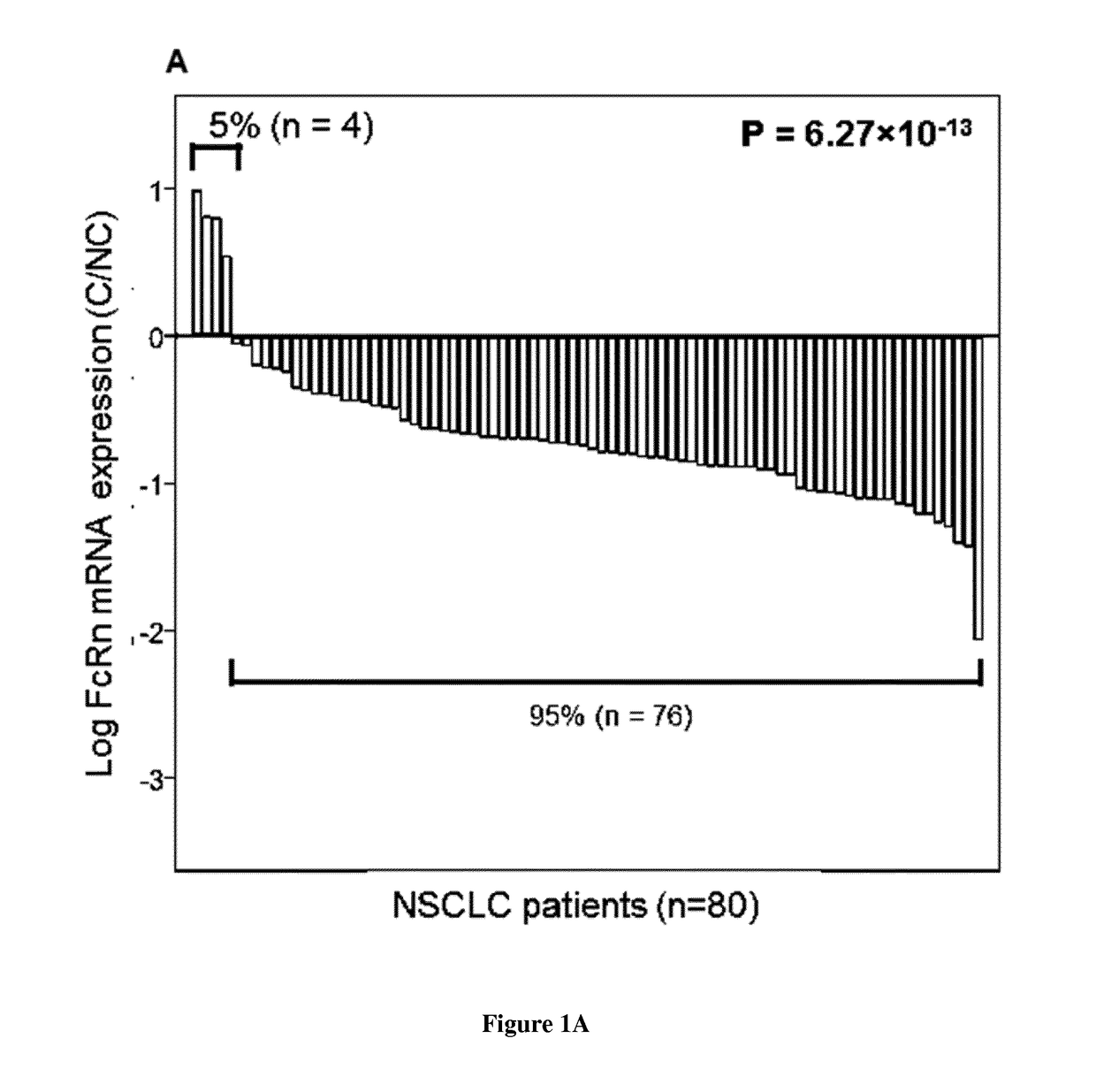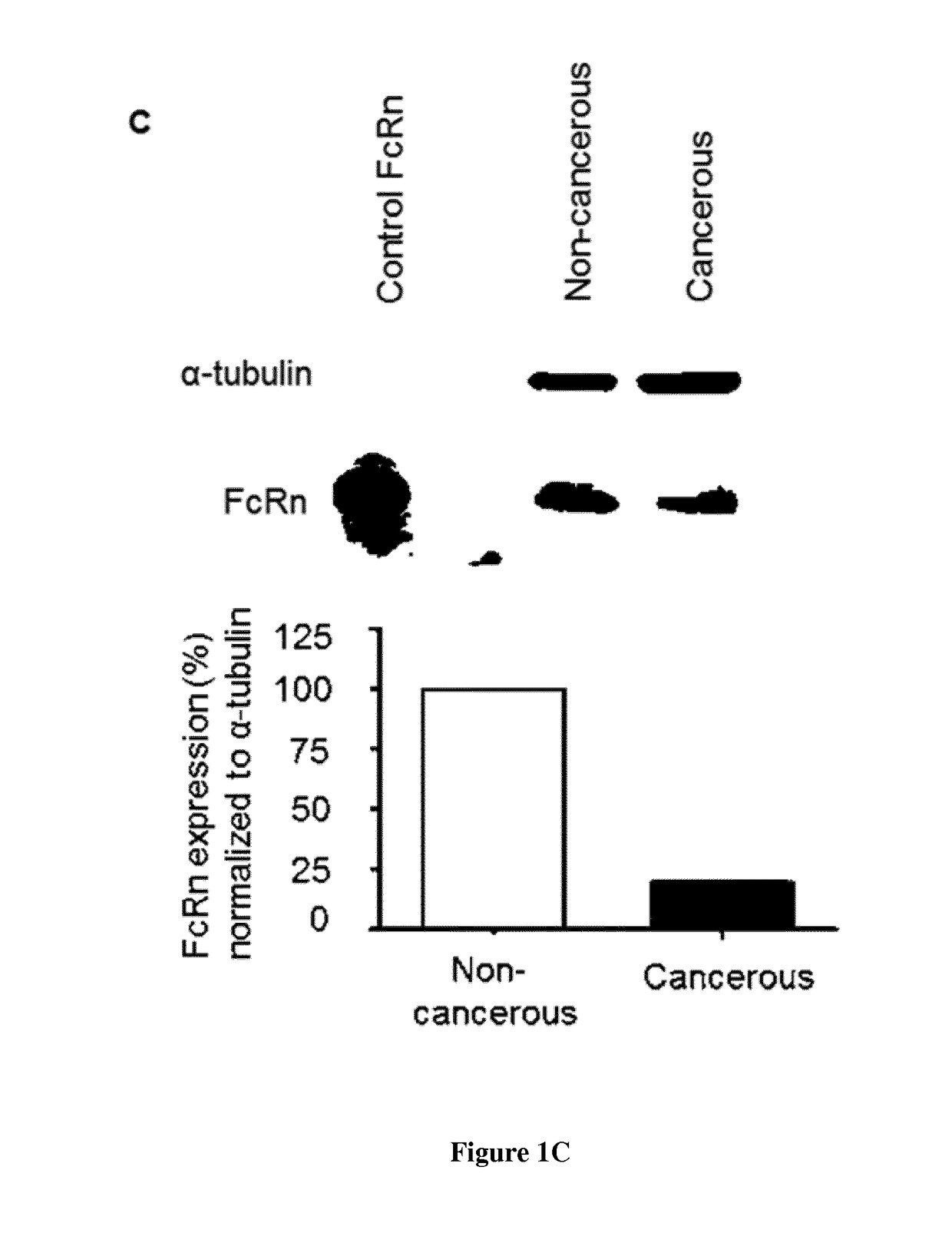Methods for predicting the survival time and treatment responsiveness of a patient suffering from a solid cancer
a solid cancer and survival time technology, applied in the field of methods and kits for predicting the survival time and responsiveness of a patient suffering from a solid cancer, can solve the problems of no relevant guidelines for prescribing chemotherapy, no reliable prognosis of the outcome of the cancer, and the serious public health problem of cancer
- Summary
- Abstract
- Description
- Claims
- Application Information
AI Technical Summary
Benefits of technology
Problems solved by technology
Method used
Image
Examples
example 1
[0146]Material & Methods
[0147]Lung Tissue Specimens
[0148]Specimens of lung tissue were collected from patients (all gave their informed consent) who underwent surgery for primary lung cancer at the Trousseau Hospital, Tours, France, between 2006 and 2011 (n° DC-2008-308). Samples of cancerous and non-cancerous tissues (80 patients) were selected by a pathologist. The non-cancerous tissue samples were taken from sites at least 3 cm away from the edge of the tumor. Histological diagnosis was performed, and tumors were graded according to the World Health Organization classification of lung tumors. Patient data were recorded in a database for statistical analysis. This study was conducted in accordance with the ethical standards of the Helsinki Declaration and French bioethical authorities.
[0149]Quantitative Real-Time PCR
[0150]Following RNA extraction (QIAsymphony RNA kit, Qiagen) and cDNA synthesis (High Capacity cDNA Reverse Transcription kit, Applied Biosystems), quantitative-PCR wa...
example 2
[0180]FIG. 4 shows tumor lesions in the lung of wild-type (WT) and FcRN KO mice that were treated with a specific (TA99 mAb) monoclonal antibody and an irrelevant control isotype. B16F10-Luc melanoma cells (100 000 cells / animal) were injected in the tail vein of C57 BL / 6 mice. At day 1, day 4 and day 8 after tumor induction animals were treated by i.v. injection with an anti-tyrosinase-related protein-1 monoclonal antibody (200 μg, TA99 from BioXcell) or an irrelevant control isotype (200 μg, IgG2a). Animals were sacrificed at day 18, lung excised and tumor lesions counted. Results are expressed as Mean±SEM and analyzed using a Mann Withney non parametric test.
[0181]The results show that treatment of animals that do not express FcRn did not respond to the mAb treatment compared to WT animals.
PUM
| Property | Measurement | Unit |
|---|---|---|
| Biological properties | aaaaa | aaaaa |
| Time | aaaaa | aaaaa |
| Immunogenicity | aaaaa | aaaaa |
Abstract
Description
Claims
Application Information
 Login to View More
Login to View More - R&D
- Intellectual Property
- Life Sciences
- Materials
- Tech Scout
- Unparalleled Data Quality
- Higher Quality Content
- 60% Fewer Hallucinations
Browse by: Latest US Patents, China's latest patents, Technical Efficacy Thesaurus, Application Domain, Technology Topic, Popular Technical Reports.
© 2025 PatSnap. All rights reserved.Legal|Privacy policy|Modern Slavery Act Transparency Statement|Sitemap|About US| Contact US: help@patsnap.com



